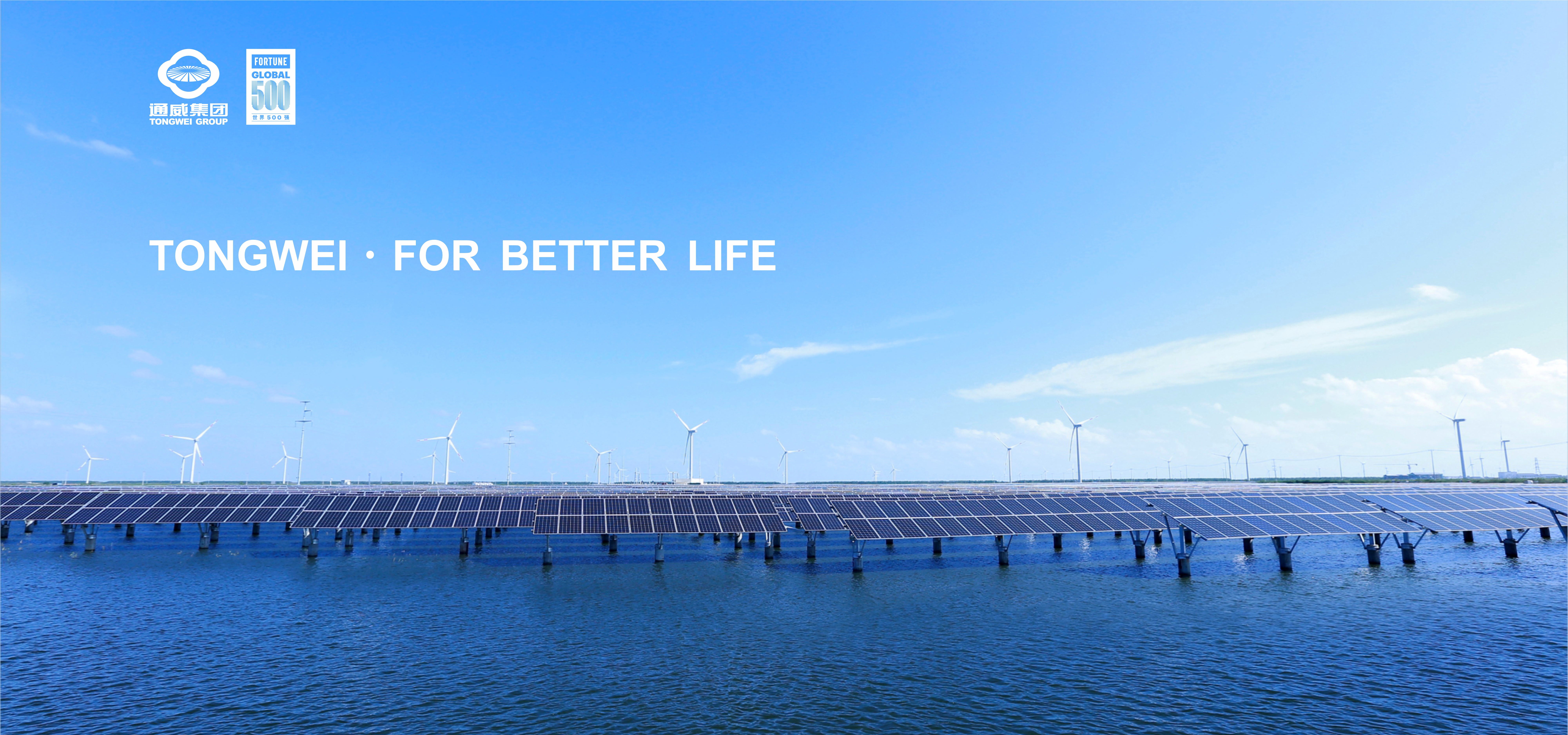2025-06-17
When the sweeping wind passes through the elevated PV arrays, it delivers not just 85 million kWh of green electricity, but also the nascent greenery of grass seeds sprouting beneath the panels. In mid-June, the construction is in full swing for China's first "grass-PV complementarity" pilot project on desert steppe, jointly developed by Tongwei and the state-owned Huaneng Group. Foundation pouring has been largely completed, with PV bracket installation progressing steadily, as vast steel structures glisten under the sun.

Workers adjusting PV brackets
In 2024, China's No.1 Central Document explicitly proposed "exploring 'grass-PV complementarity' models" for the first time, charting a course for green development in desert steppe regions. In just a few months, the Inner Mongolia Autonomous Region Forestry and Grassland Bureau officially approved and supported the pilot project in Damao Banner, and included it in the construction of the comprehensive reform pilot zone for grassland protection and development in the autonomous. After rigorous ecological assessment, the project was sited at Bayinsaihan Gacha in Chaganhada Sumu and Bayinbaolige Gacha in Bayin'aobao Sumu. As a key component of Damao Banner's integrated wind-PV-storage project, the pilot project has an installed capacity of 50,000 kilowatts, and after completion, it will provide green and clean energy electricity to the Tongwei green substrate project in the banner's new industrial park.
Zhou Hui, director of Damao Banner's Grassland Resource Protection Center of the Bureau of Forestry and Grassland, explained that the project's core innovation lies in utilizing space beneath panels for grass cultivation and livestock, achieving economic-ecological synergy while establishing a new "ecological restoration + PV construction + modern husbandry" integrated development system. Two integration models were designed: "Degraded desert steppe restoration + PV + carbon sequestration and sink enhancement," focusing on ecological recovery and carbon sink increments; and "Degraded desert steppe restoration + PV + modern ecological pasture," exploring livestock capacity and optimal grazing patterns under PV systems across varying degradation levels. These practices will pioneer new approaches for grassland ecological protection and sustainable utilization.

"Elevating every pile foundation is an ecological test posed by the grassland," said Wang Honggang, manager of Tongwei Green Substrate New Energy project. He noted that since the project broke ground on February 22, 2025, the builders have faced special challenges: the conventional PV brackets is 0.8 meters above the ground, but here it must be raised to 1.5 meters. This vertical space carries the dual mission of ecological restoration under the panels and future animal husbandry development. The higher bracket design brings stronger wind load requirements and an increase in steel consumption, and the construction accuracy also needs to be improved, and every step tests the fineness of the project.
Zhang Xin, director of electricity of Yongxiang Co., Ltd., said that the project is currently 55% complete and is expected to be connected to the grid and generate electricity by the end of September this year. After operation, the annual power generation is about 85 million kWh, and the annual utilization hours reach 1,700 hours, which is equivalent to saving 30,000 tons of standard coal and reducing carbon dioxide emissions by about 90,000 tons per year, significantly improving the "carbon emission reduction" benefits of the region. It is believed that with the successful construction of the nation's first "grass-PV complementarity" pilot project, it will provide a "Tongwei model" for the green development practice of "power generation on the panels, grass planting under the panels, achieving grass-PV complementarity and ecological priority".

